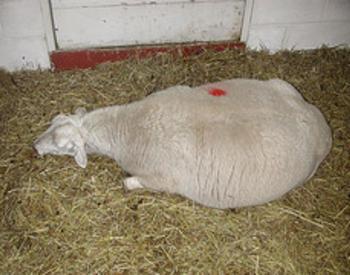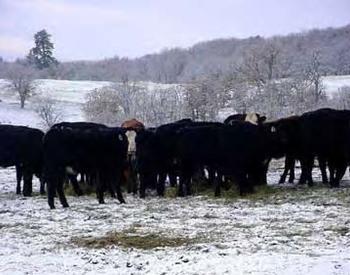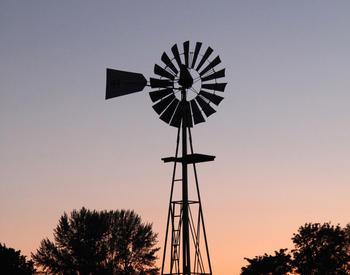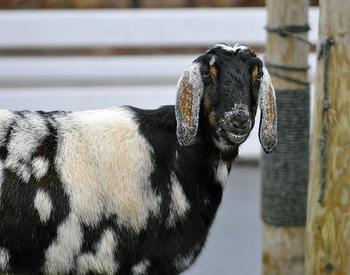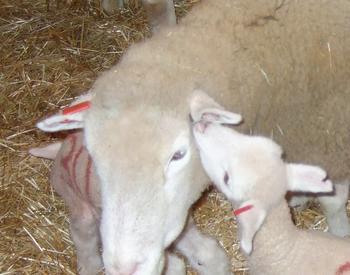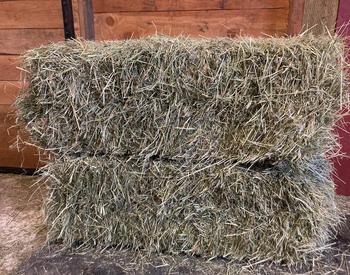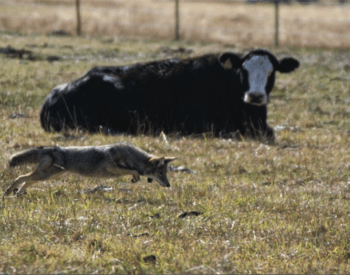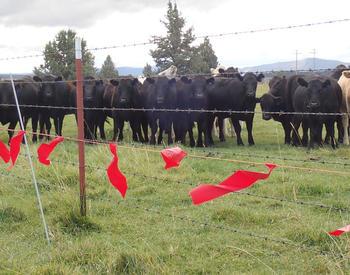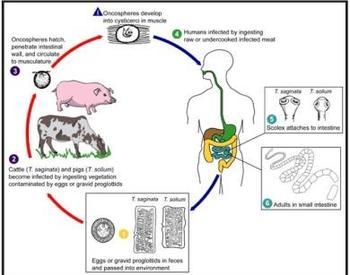Transcript
Welcome to Living on the Land, an award-winning source of useful information brought to you by your Oregon State University Extension Service.
Sheep and goats require five essential nutrients, water, protein, carbohydrates, and fat called energy, vitamins, and minerals. A lack of any of these can cause illness, poor growth or performance, and even death.
Some signs of a good diet include rapid growth, good body condition, and alert behavior. Hungry animals eat continuously and do not arrest, chew, cud, or play. Some of the required minerals for animal health are sodium, calcium, and zinc. Sheep and goats are ruminants with a specialized digestive tract. Microorganisms in the room produce enzymes that break down plant material and make nutrients available for fermentation. The nutrients, the fermentation byproducts, and even the microbes are energy and protein sources for the sheep or goats. A forage-based diet is important to keep the rumen and the animal healthy. Any changes in the diet should happen gradually over a week or two so that the animal and the microbes can adapt.
If the change happens too fast, the animal's digestion will be disrupted, reducing the metabolism of the feed and possibly making the animal ill. There are two types of feed, forage and concentrates. Forage is fibrous plant material. It can be fresh, dried, or fermented. Examples are grasses and legumes which are also called pasture, shrubs also called brows, and hay. Most small-scale producers do not use fermented feeds called silage. Forages provide both protein and energy at a lower cost, but they can vary in their nutritional quality. Quality depends on the plant's maturity at the time of the harvest, the plant species, and the storage method among other factors. Concentrates are high-energy grains such as corn, oats, and barley.
They can also be pellets of high-energy, high-protein blends of feeds that meet a specific nutritional need and may contain soybean meal, cottonseed meal, and molasses to hold them together. Concentrates are more expensive than forages. Most adult sheep and goats can do well on high-quality grass hay, minerals, and water. On the other hand, low-quality hay with less than 7% crude protein will not support animals that are growing, are in late pregnancy, or lactating. These animals often need nutritional supplements or they will not meet their potential for growth, live offspring, or milk production. Sheep bred for wool may need protein supplements to support fleece production on lower-quality grass. Be sure to add any concentrates gradually to the diet and feed them in several small meals daily. For more information on getting started raising sheep and goats, contact your local extension agent, natural resources conservation service, or soil and water conservation district. Technical and financial assistance may be available for landowners wishing to address resource concerns on their property.
The five essential nutrients—water, protein, carbohydrates (energy), vitamins, and minerals—are discussed, emphasizing the importance of a well-balanced diet for preventing illness, promoting growth, and ensuring overall well-being. Signs of a healthy diet, such as rapid growth and alert behavior, are highlighted.
This is from the Living on the Land series. Download the related PDF - Living on the Land: Getting Started with Sheep and Goats: Nutrition and Feeding
The phrase “Living on The Land” is used with permission from Living on The Land Stewardship for Small Acreage, © 2008, UNCE/WSARE.

